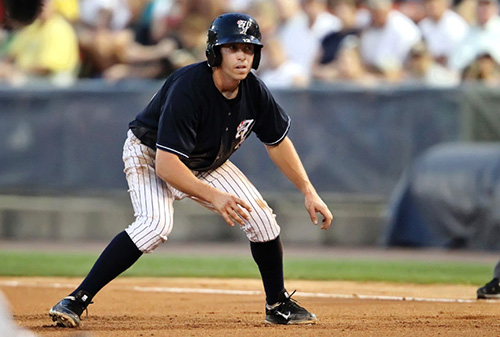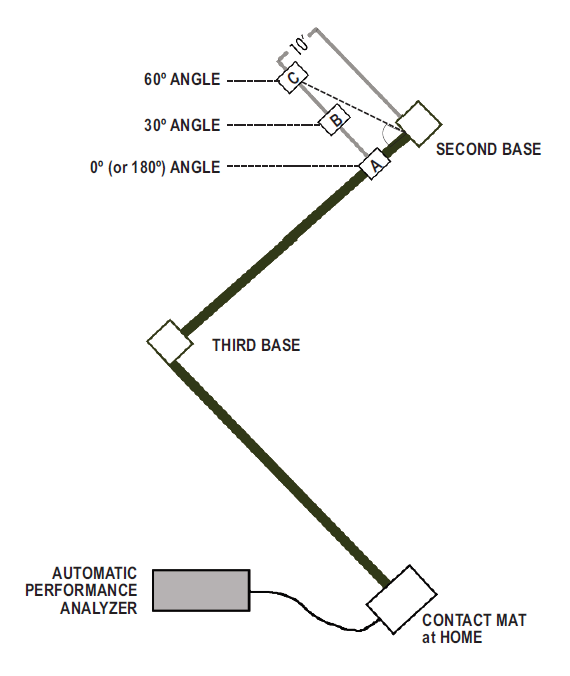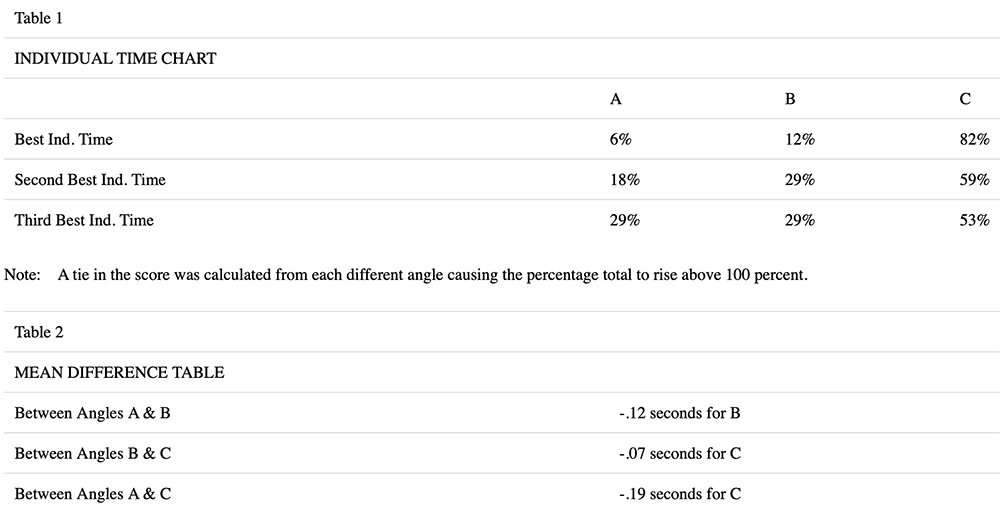 The Athletic Journal published this article by Mark Johnson in January of 1973 while Mark was a Graduate Assistant for Jerry Kindall at the University of Arizona. When Mark wrote this as a part of his Master’s thesis, he was fresh out of professional baseball and probably had no idea that he would become a Hall of Fame coach and one of the most respected men of the college game.
The Athletic Journal published this article by Mark Johnson in January of 1973 while Mark was a Graduate Assistant for Jerry Kindall at the University of Arizona. When Mark wrote this as a part of his Master’s thesis, he was fresh out of professional baseball and probably had no idea that he would become a Hall of Fame coach and one of the most respected men of the college game.
We grade the batter/runner’s times to first base constantly; we know a 4.19 second runner is fast, and we know a 4.0 second runner is considerably faster. The latter has a better chance of winning more ball games for your team, but how about the base runner’s chances of scoring from second base?
Would you prefer the player who is .19 seconds faster to home plate? It seems like an easy answer, but hear this: with the proper lead-off at second base, the 4.19 second runner would stand a good chance of beating the 4.0 second runner. He just needs to establish his lead in a different spot, one which is NOT closer to home plate! This was the lead-off we used at New Mexico, Arizona, Mississippi State, Texas A&M, and Sam Houston State, as well as two USA National teams. Why? Because it is faster, and no doubt won some ball games for us.
This study was conducted at the University of New Mexico in 1971. Its purpose was to attempt to find a quicker path from second base to home plate which- while not increasing the chance of being picked off- might lend itself to a more effective opportunity for scoring. It dealt with a rather unique lead-off from second base.
The study focuses on a situation where there are two outs and a man on second base. In this scenario, most teams attempt to score on a base hit through the infield. A force-out at third or a tag out is not a concern. With this in mind, the study attempted to find which spot in the lead-off position from second base, angle A, B, or C, would best lend itself to the quickest route to home plate (Diagram 1).
Seventeen of the 19 University of New Mexico baseball players who were making the team’s first trip to New Mexico State University in 1971 were used as subjects. The two players who were not tested were hampered by pulled hamstring muscles which left them unable to participate, as maximum speed was required.
Testing was conducted under the same field condition for each day of testing. All NCAA field requirements were followed, and proper maintenance of the field preceded each testing. A wind gauge was used to determine wind velocity. Tests were not conducted when readings of winds over 4.5 MPH were recorded.

The study was designed for each participant to run only when he had recovered fully from a previous run. Each participant ran three times from each angle, although never from the same angle twice in a row.
The three timed runs yielded an arithmetic mean running time for each participant at each angle. This was the calculated time used in analyzing the effectiveness in lead-off positions.
Particular controls were placed on the design to eliminate extraneous variants. A control worth mention is the Automatic Performance Analyzer, the timing device used to calculate to the nearest 1/100th of a second the time taken to start and finish each run. The researcher was the constant regulator of this device. The run began on a simultaneous verbal and manual signal from the researcher. It finished when the participant’s foot reached the mat at home plate, which automatically stopped the timing device.
Participants began the run by facing third base, thus eliminating any variance of a cross-over step as opposed to a lead-foot step. Note: the baserunners’ movements were all in a straight line toward third base. There were no forward steps to the base line as the pitcher began his motion to home plate. Why is it faster? The wide lead widens the turning angle at third base, which creates less need to “slow down” to make a 90º turn, and/or it reduces the steps in the approach to the bag or after touching the bag – the troublesome “wide turn.” Participants were also instructed to touch third base with which ever foot came up rather than break stride to hit the base with the inside foot.
In Table 1, the best individual running time for each participant from the nine runs made (three each from each angle) clearly indicates that the 17 baseball players found the run from Angle C (60º angle) most effective. Eighty-two percent of the best individual times significantly confirm a similar support for this angled position. The second and third best individual times significantly confirm a similar support for this angled position.
The second table gives the composite actual time difference between the three positions. Table 2 shows the time saved by using the Angle C position over Angle B or A.

It would appear that teams should accept this lead-off position in preference to the base path lead-off normally used in this situation. This position clearly eliminates critical inches and seconds in baseball. The results of the study strongly indicate that Angle C’s position created the quickest path to home plate. What about pick-offs? I cannot recall even a pick-off attempt. This is not a long lead that would encourage pick-offs. It is a WIDE lead. Maybe two or three steps and a dive to second base. There could possibly be encouragement for a “back door pick” by the catcher if the baserunner is not jamming back after the ball hits the catcher’s mitt. But that is a 127’ throw.
Again, the lead-off from second base with two men out is not long. Rather than taking a long lead-off and being caught going back and forth by fakes by the shortstop and second baseman, it is lead-off which will enable the runner to have a walking lead and momentum going forward when the ball is pitched. This two-out lead decreases the success of the pick-off play.
Nineteen hundredth of a second – how often has this made a difference between a score or an out? It’s about doing all the little things right!
A Lifetime ABCA Member, Mark Johnson has held assistant coaching posts at the University of New Mexico (his alma mater), University of Arizona, Mississippi State University and Texas A&M University. He also led the programs at Sam Houston State University and Texas A&M University as their head coach, retiring with 1,043 wins. Johnson is a three-time Southwest Conference Coach of the Year, a three-time Big 12 Conference Coach of the Year, a four-time ABCA Regional Coach of the Year, and was named the Sporting News and U.S. Olympic Committee National Coach of the Year in 1999. He was named to the ABCA Hall of Fame in 2001 and the Texas Baseball Hall of Fame in 2002, and has received the FCA Jerry Kindall Character in Coaching Award (2008), the ABCA Ethics in Coaching Award (2009) and the ABCA Lefty Gomez Award (2012).